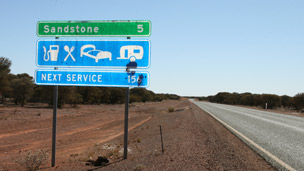Vocabulary: Design 词汇:设计

Luis Prado has created what he hopes will become the international symbol for global warming. He's one of many designers contributing icons to an online bank of icons called the Noun Project.The creators of the Noun Project think it could one day contain an icon for every noun, which is a tall order.
But we are already surrounded by icons in the modern world. Pictorial instructions appear on everything from instant noodles to emergency exits. And of course, modern computers and smartphones are unthinkable without a screenful of icons.
收听与下载
It's hard to imagine now, but early computers didn't have them. They used 'command line interfaces': lines of written commands scrolling down the screen. The virtual desktop with icons we know today was created by Xerox in the 1970s. They established conventions we still use: a document was symbolised by a blank sheet of paper with one corner folded, a directory was a card folder with a tab on top, a picture of a trash can meant 'delete' and a closed envelope indicated an unread email.
As technology improved, it was possible to move away from the early, simple black and white signs to full colour and more realistic images. But we still love the simple when it comes to icons. All the designs on the Noun Project site are clean black and white line drawings, and there are nostalgic fan sites dedicated to old-school computer icons from the 70s and 80s.
But things are harder for designers today. Modern devices have many functions and require more icons, making it harder to avoid confusion. Take the arrow. It's an old and well-used symbol but in a modern operating system, an arrow can mean drop down menu, undo, redo, sort, cursor, play video, change text direction and move to next item - to name just a few uses.
It's clear we need icons more than ever. So what makes a successful one? As well as simple lines and unique shape, an icon needs to be universal, so plays on words don't work well. An early Apple icon of a cat meaning copy (from the English 'copycat') was soon dropped because it was confusing to non-English speakers. But it might be impossible to be truly international. Most computers indicate time passing from left to right, with the past on the left and the future on the right. That's logical for English speakers, but not for people who write right to left like Arabic speakers.
Glossary 词汇表 (点击单词收听发音)
- symbol for某物的象征
- icons图标
- bank库(如数据等)
- a tall order一项艰巨的任务
- pictorial instructions图片说明
- a screenful of满屏的,整屏的
- commands(计算机)指令
- scrolling down向下滚动
- virtual desktop虚拟桌面
- established conventions既定惯例
- symbolised by被…代表
- indicated标示出
- realistic images逼真的图像
- line drawings线条画
- nostalgic怀旧的
- functions功能
- confusion疑惑 ,困惑
- operating system操作系统
- to name just a few仅举几个例子
- universal全球(通用) 的
- logical有逻辑的











